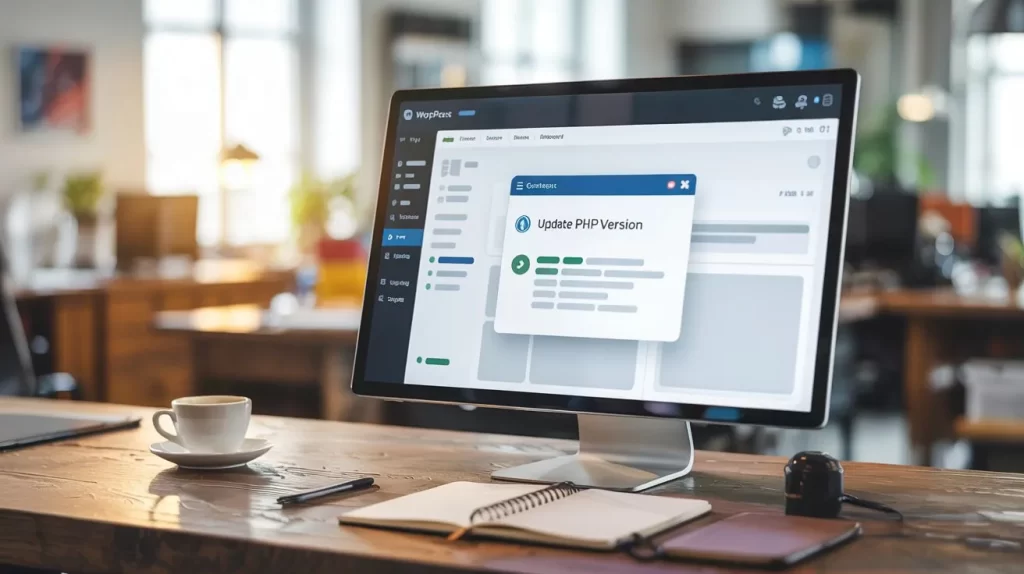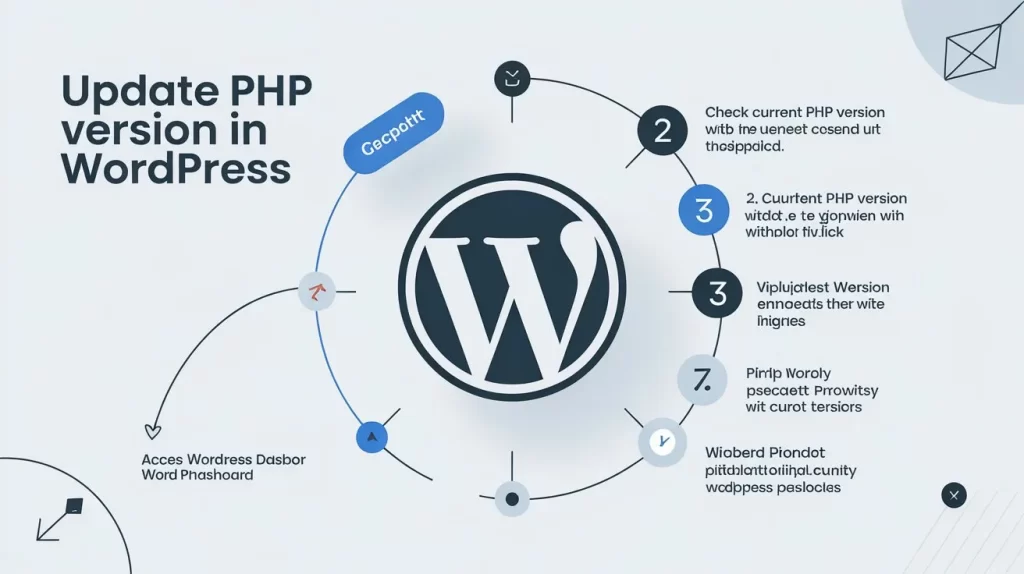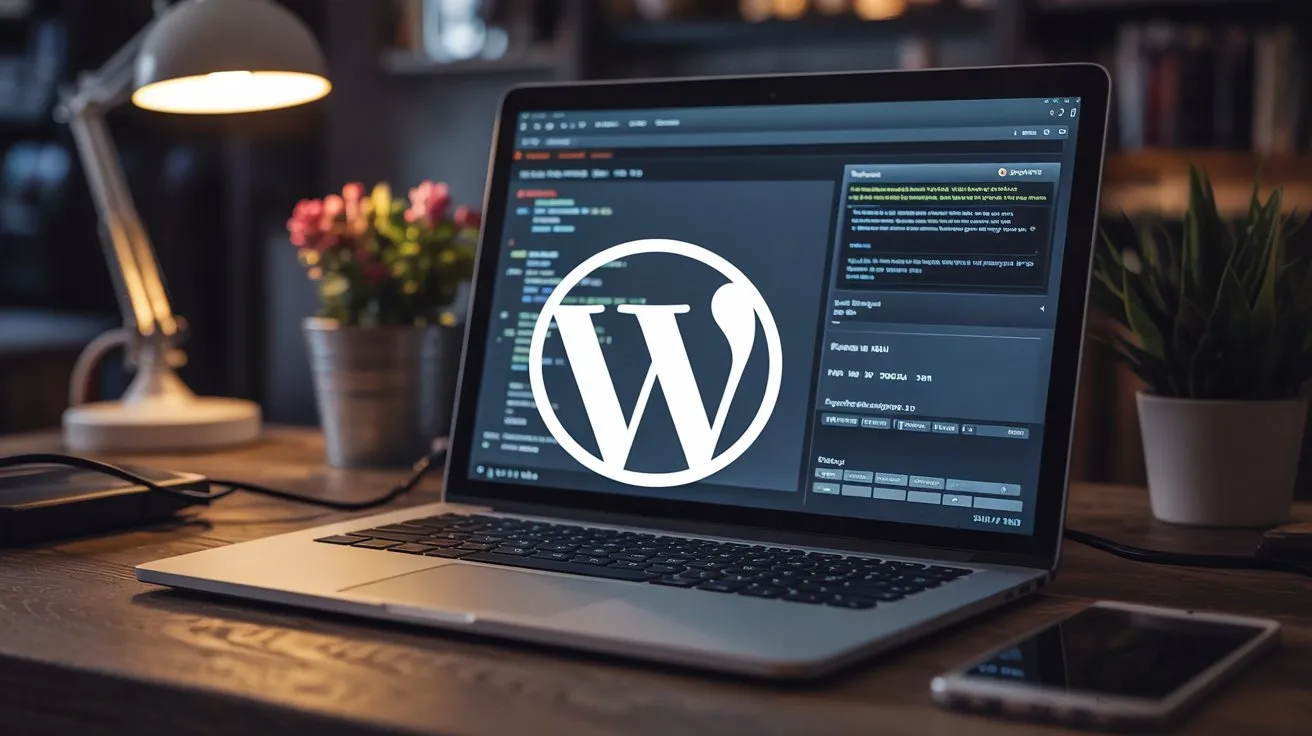Why Updating PHP for WordPress is Important for Performance and Security
Updating the PHP version of your WordPress website is one of the most crucial steps you can take to ensure optimal performance, security, and compatibility. PHP (Hypertext Preprocessor) is the server-side scripting language that powers your WordPress site. It’s responsible for running everything from your website’s content management system (CMS) to the interactions with your database.
As WordPress evolves, so too must the version of PHP that runs it. Newer PHP versions come with enhanced features, improved performance, and security patches that protect your site from potential vulnerabilities. On the other hand, using an outdated PHP version can result in slower performance, compatibility issues, and security risks that could leave your site exposed to cyber-attacks. We will walk you through the steps of checking your current PHP version, how to update PHP via cPanel, and alternative methods if you don’t use cPanel. Finally, we’ll discuss what to do after updating PHP to ensure your site remains fully functional and secure.

How to Check Your Current PHP Version
Before updating your PHP version, it’s important to first check which PHP version your WordPress website is currently running. You can do this in several ways, either directly from your WordPress dashboard or through cPanel. Here’s how to check both:
Related Posts
- How to Add Page to Menu in WordPress
- WordPress Hacked Website Fix
- How to Check If a WordPress Site Is Hacked
Check the PHP Version Through the WordPress Dashboard
WordPress has made it easy to check your PHP version directly from the admin area. To find out your current PHP version:
- Login to Your WordPress Admin Dashboard: Go to your website’s WordPress login page and log in using your credentials.
- Go to Site Health: In the left sidebar of your dashboard, navigate to Tools and then click on Site Health.
- View Info Tab: On the Site Health page, you will find two tabs—Status and Info. Click on the Info tab.
- Find PHP Version: Under the Server section, look for the PHP version entry. This will display the version of PHP your WordPress site is running.
Check PHP Version Through cPanel
If you have access to cPanel (which is common in many hosting environments), you can check the PHP version from there:
- Login to cPanel: Go to your hosting provider’s cPanel and log in with your credentials.
- Find PHP Version: In the Software section of cPanel, locate and click on Select PHP Version or PHP Configuration (the exact wording may vary).
- View PHP Version: The PHP version currently in use will be displayed at the top of the page.
If you’re using a hosting service that doesn’t provide cPanel, you can still check your PHP version through other methods, such as using FTP to locate the phpinfo.php file.
How to Update PHP Version via cPanel
If you’re hosting your WordPress site with a service that provides cPanel, updating the PHP version is relatively simple. Here’s how to do it step by step:
Step 1: Log in to Your cPanel Account
Access your cPanel through your hosting provider’s dashboard by entering your login credentials.
Step 2: Locate the PHP Version Manager
Once logged in, find the Software section. Depending on your hosting, it may be labeled Software, PHP Selector, or PHP Version Manager. Click on it to proceed.
Step 3: Choose a New PHP Version
In the PHP Version Manager or PHP Selector section, you’ll see the current version of PHP selected for your website. To change it:
- Select the PHP version dropdown and choose the latest stable version available (we recommend using PHP 8.x for optimal performance and security).
- After selecting the desired version, click the Set as current button.
Step 4: Verify Changes
Once you’ve set the new PHP version, you can go back to the Site Health section in WordPress (as shown above) to confirm that the PHP version has been updated.

Alternative Methods for Non-cPanel Hosting
If your hosting provider doesn’t offer cPanel, don’t worry—there are alternative ways to update the PHP version. Here are some common methods:
Update PHP via Managed WordPress Hosting
Managed WordPress hosting services like WP Engine, Kinsta, and Flywheel usually provide an easy-to-use interface for updating PHP. You can access the hosting dashboard, find the PHP settings, and change your PHP version with just a few clicks.
Related Posts
- WordPress Customization Expert
- Custom WordPress Web Design & Customization
- How to Edit WordPress Header
Use the Hosting Provider’s Control Panel
Most hosting providers that don’t use cPanel still offer their own control panels where you can change the PHP version. For example, Plesk, DirectAdmin, and InterWorx have similar PHP version management options. Check the hosting provider’s help documentation to find out how to change the PHP version.
Contact Customer Support
If you’re unsure or don’t have access to the PHP settings through your hosting panel, you can always contact your hosting provider’s support team. They will be able to guide you through the process or make the changes for you.
What to Do After Updating PHP – Testing Site Compatibility and Troubleshooting
Updating your PHP version is crucial, but it’s equally important to ensure that your website continues to function smoothly after the update. Here’s what you should do:
Test Your Site Thoroughly
After updating your PHP version, visit your website and check each page for issues. Make sure to:
- Test all forms, including contact forms and login forms.
- Check if all plugins and themes are working properly.
- Verify that any custom code or features (e.g., custom post types, APIs) are still functioning correctly.
Test Site Speed
Newer PHP versions often come with performance improvements, so test your site speed before and after updating. Use tools like Google PageSpeed Insights or GTmetrix to compare the performance before and after the PHP update.
Check for Plugin and Theme Compatibility
Older themes and plugins might not be fully compatible with newer PHP versions, so it’s important to ensure all your plugins and themes are up-to-date. If you experience any issues, check the plugin or theme developer’s website for updates or compatibility information.
Debugging Mode
If you notice errors after updating PHP, enable WordPress debugging to help identify the issue. To do this:
- Open your wp-config.php file.
Add the following line before /* That’s all, stop editing! Happy publishing. */:
php
CopyEdit
define( ‘WP_DEBUG’, true );
- Save the file and reload your website to see the error messages, which can help you troubleshoot further.
Rollback PHP Version (If Necessary)
If your site is experiencing major issues after the PHP update and troubleshooting hasn’t fixed it, you can always roll back to the previous PHP version. Most hosting providers allow you to easily switch between versions using the cPanel or hosting control panel.
Why Keeping PHP Up-to-Date is Critical for Site Health
Updating the PHP version for your WordPress site is not just a good practice—it’s essential for optimal performance, security, and compatibility. PHP updates bring essential security patches that help protect your website from threats and vulnerabilities. They also improve the overall speed and efficiency of your website, ensuring a better user experience.
While updating PHP is a straightforward process, always make sure to test your site thoroughly after making changes. If you experience any issues, be prepared to troubleshoot or revert to a previous version. By staying proactive and keeping your PHP version up-to-date, you ensure that your WordPress website continues to run smoothly and securely.
Frequently Asked Questions
How do I check the PHP version in WordPress?
You can check your PHP version through the WordPress dashboard by navigating to Tools > Site Health and looking for the PHP version under the Server section.
Why is updating PHP important for WordPress?
Updating PHP improves your site’s performance, ensures better security with the latest patches, and helps maintain compatibility with the newest WordPress features, plugins, and themes.
How can I update PHP in WordPress without cPanel?
If you don’t have cPanel, you can update PHP via managed hosting dashboards like WP Engine or Kinsta. Alternatively, contact your hosting provider’s support team for assistance.
What should I do if my website breaks after updating PHP?
If your website breaks, try troubleshooting by checking plugin and theme compatibility. You can also enable WordPress debugging or revert to the previous PHP version if necessary.
Key Takeaways
- Updating PHP improves WordPress site security, performance, and compatibility.
- You can check your PHP version through the WordPress dashboard or cPanel.
- Updating PHP can be done easily via cPanel, managed hosting dashboards, or by contacting support.
- Always test your site after updating PHP to ensure everything is functioning as expected.
